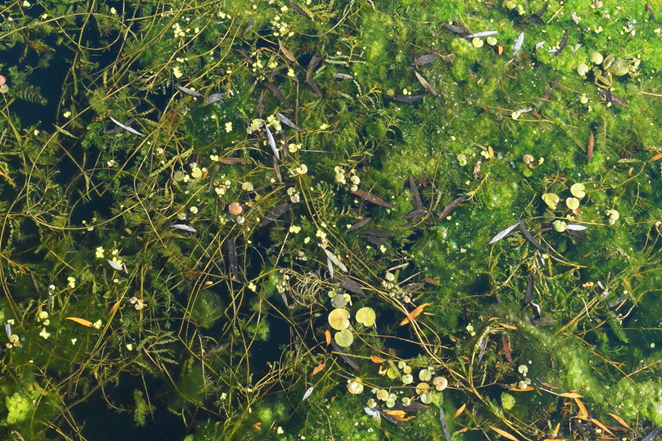There are many ways you can control, pond algae: from fountains, pond dye, circulators, grass carp, diffused aerations to even pond chemicals. But have you ever thought of preventing the occurrence of pond algae?
Some of these pond algae control techniques are more effective than the others. Some don’t do anything while some many go ahead and do more than what is needed. You should also know that even though some of these control measures are safe for the pond environment, the misuse of some practices may destroy the entire ecosystem of your pond.
So instead of allowing the algae to grow, why not nip it off by the bud? In this informative guide, you will learn how to prevent the growth and development of pond algae.
How to Prevent Pond Algae (The Eco-Friendly Way)
The best way to prevent the growth of algae in your pond is to cut off the nutrients responsible for its development. Instead of allowing the algae to grow, you will cut off their survival chances. You can achieve these using bacteria. Some species of decomposing bacteria grow naturally within the ecosystem in the pond. These bacteria break down elements that are responsible for the growth of algae. These elements are nitrogen and phosphorous.
However, these bacteria require an abundant supply of oxygen to carry out their function efficiently. A limited supply of oxygen will slow down the entire process. Failure to receive the adequate amount of oxygen will lead to the production of harmful byproducts such as methane and sulfur. These elements will do more harm than good in your pond. See this article on how to give your pond the ideal amount of oxygen.
So, you have to ensure adequate pond aeration. The adequate supply of oxygen will help facilitate the entire process. You can add oxygen to your pond using the two procedures:
- Adding water to the air
- Adding air to the water
The first process is less efficient when compared with the second. For example, water fountains are one way of adding water into the air. But the amount of oxygen added through this process is minimal, and the fountain serves more as a decorative element.
The second method of adding oxygen to the water through a diffused aeration system is better and more efficient in the overall oxygen transfer in the pool.
Experts from Swell UK recommends you go for the second method. You can also add pond-biotic treatments as supplements to your pond aeration system. This treatment combines beneficial bacteria that will boost the functions of the natural decomposing bacteria. All these will aid your pond aeration system to balance up the ecosystem and always maintain the natural environment. The pro-Biotic treatment also comes with short-term benefits as they also target algae-growing nutrients.
 Photo provided by: Net-Pets
Photo provided by: Net-Pets
With the following methods, you are attacking the causes of algae growth, as opposed to when you tackle the symptoms using other measures. Your pond is a living organism. And unlike most living organisms, your pond has no immune system. So, you need to always protect it by using adequate pond aeration and pro-Biotic system. These good practices will ensure your pond stays healthy with a balanced ecosystem.

